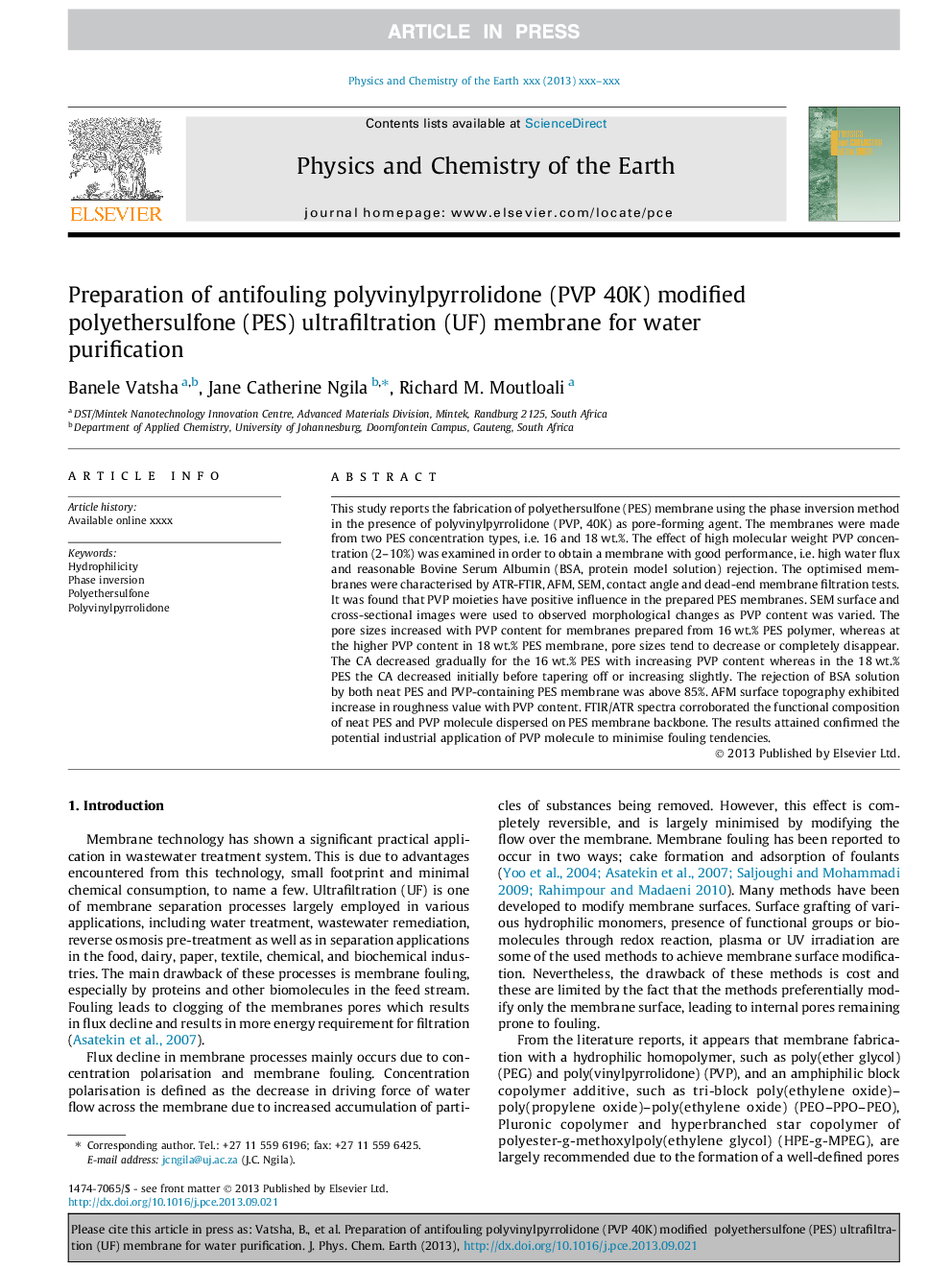| Article ID | Journal | Published Year | Pages | File Type |
|---|---|---|---|---|
| 6441997 | Physics and Chemistry of the Earth, Parts A/B/C | 2014 | 7 Pages |
Abstract
This study reports the fabrication of polyethersulfone (PES) membrane using the phase inversion method in the presence of polyvinylpyrrolidone (PVP, 40K) as pore-forming agent. The membranes were made from two PES concentration types, i.e. 16 and 18Â wt.%. The effect of high molecular weight PVP concentration (2-10%) was examined in order to obtain a membrane with good performance, i.e. high water flux and reasonable Bovine Serum Albumin (BSA, protein model solution) rejection. The optimised membranes were characterised by ATR-FTIR, AFM, SEM, contact angle and dead-end membrane filtration tests. It was found that PVP moieties have positive influence in the prepared PES membranes. SEM surface and cross-sectional images were used to observed morphological changes as PVP content was varied. The pore sizes increased with PVP content for membranes prepared from 16Â wt.% PES polymer, whereas at the higher PVP content in 18Â wt.% PES membrane, pore sizes tend to decrease or completely disappear. The CA decreased gradually for the 16Â wt.% PES with increasing PVP content whereas in the 18Â wt.% PES the CA decreased initially before tapering off or increasing slightly. The rejection of BSA solution by both neat PES and PVP-containing PES membrane was above 85%. AFM surface topography exhibited increase in roughness value with PVP content. FTIR/ATR spectra corroborated the functional composition of neat PES and PVP molecule dispersed on PES membrane backbone. The results attained confirmed the potential industrial application of PVP molecule to minimise fouling tendencies.
Related Topics
Physical Sciences and Engineering
Earth and Planetary Sciences
Geochemistry and Petrology
Authors
Banele Vatsha, Jane Catherine Ngila, Richard M. Moutloali,
